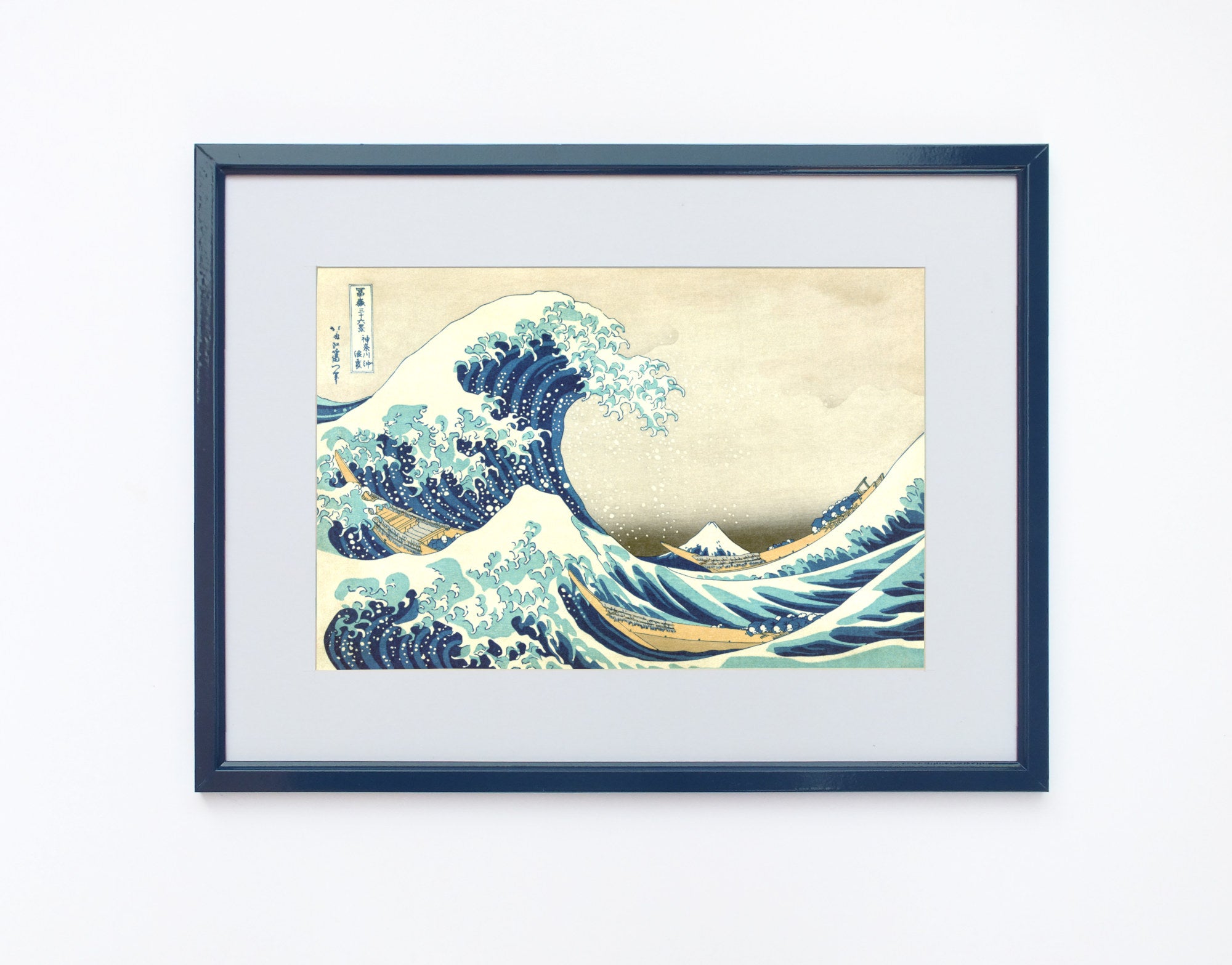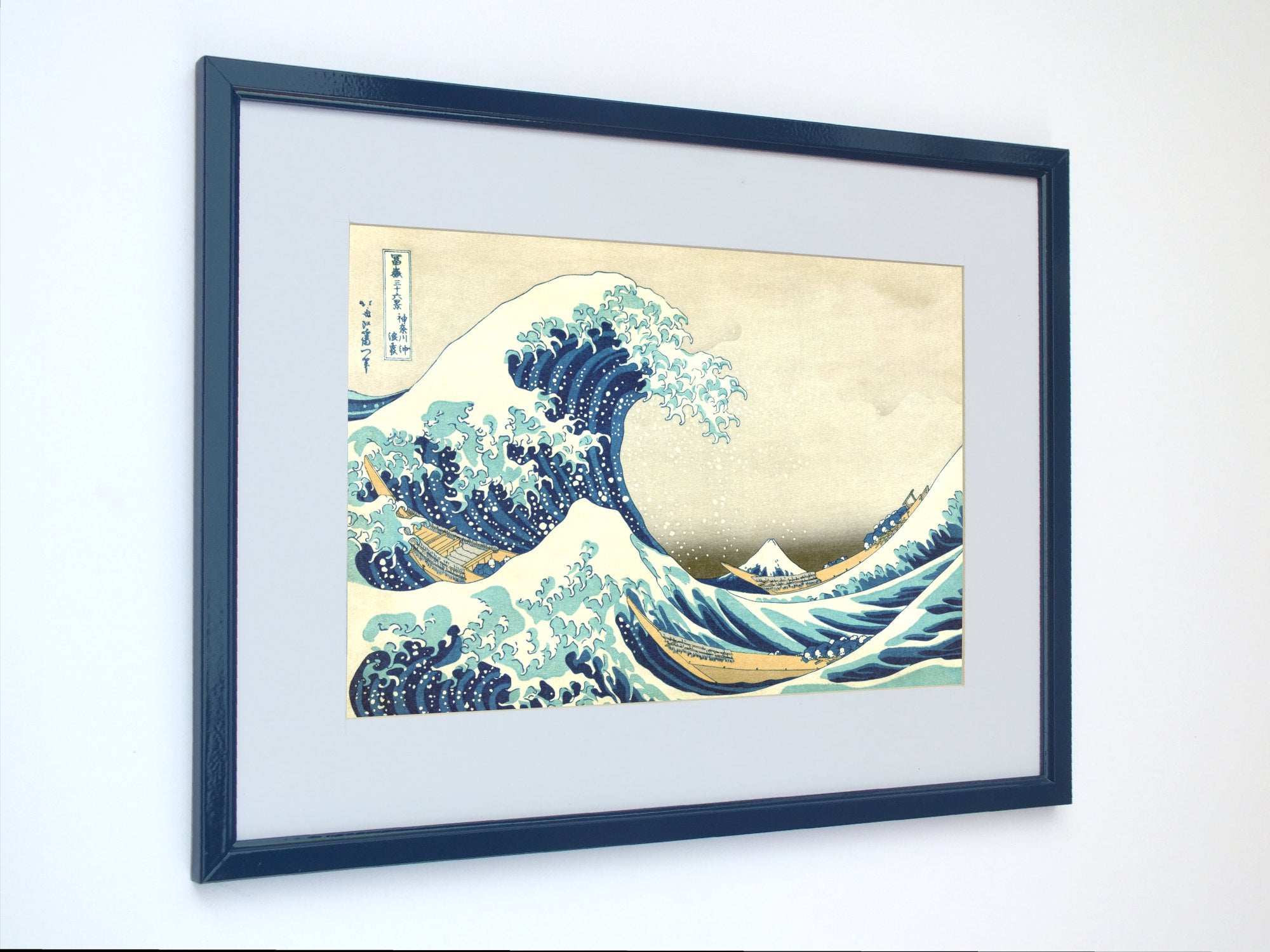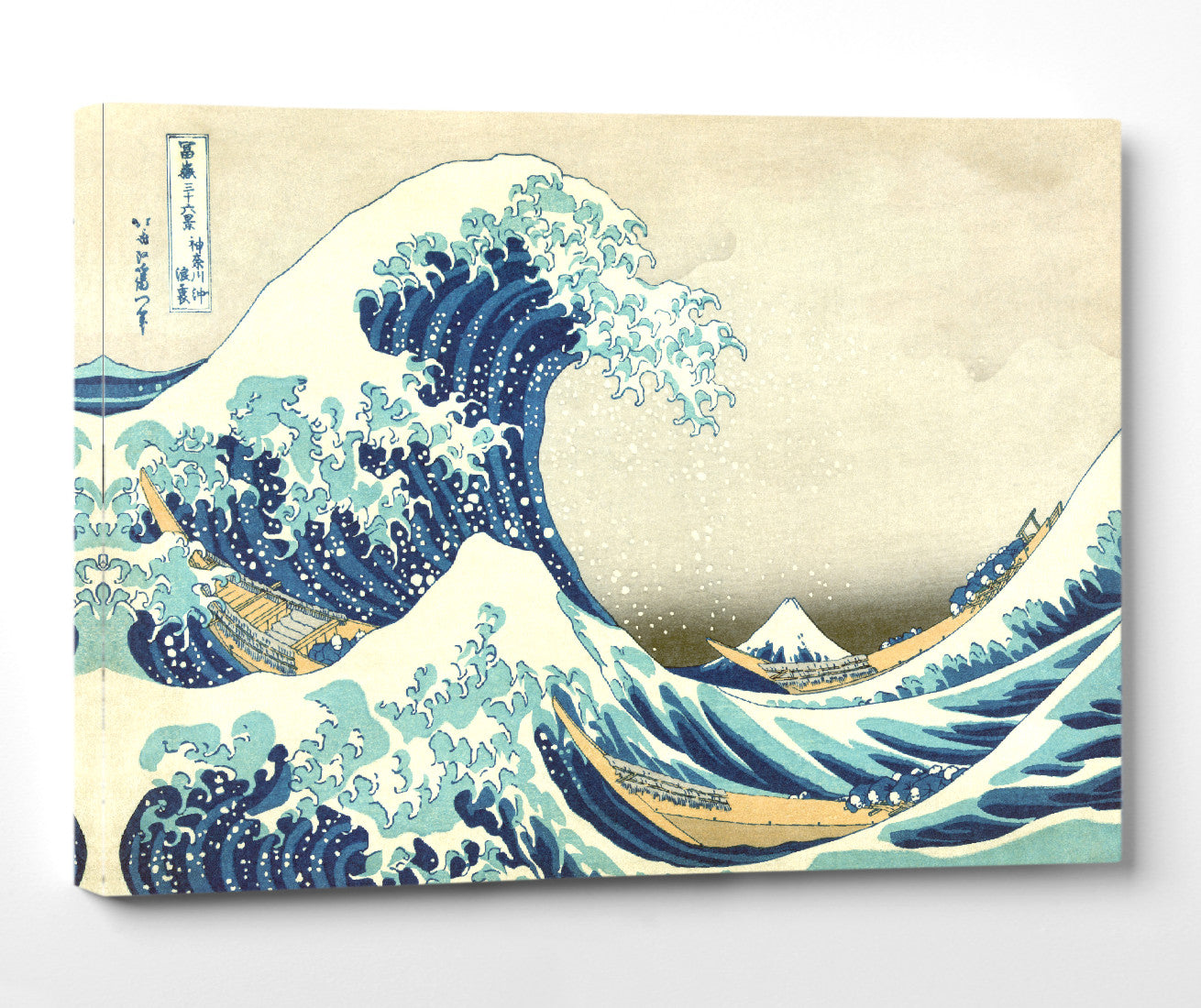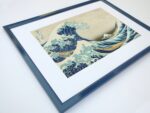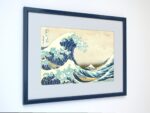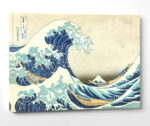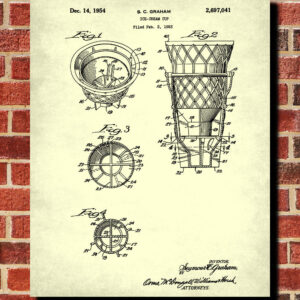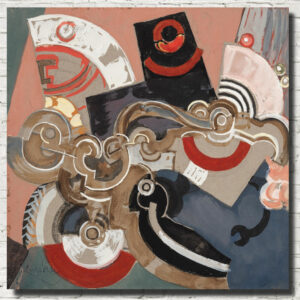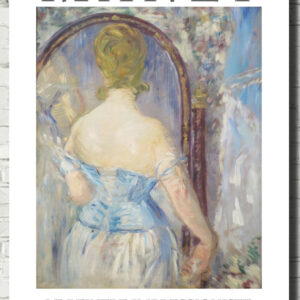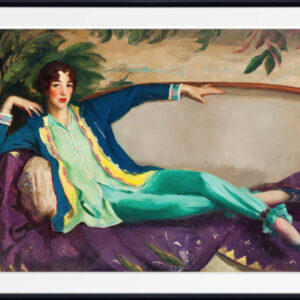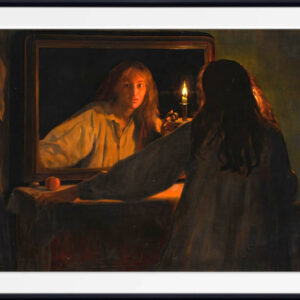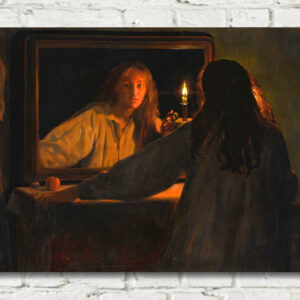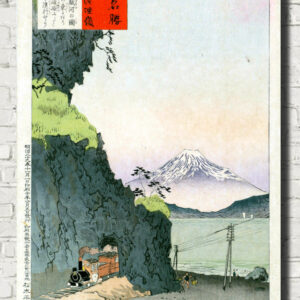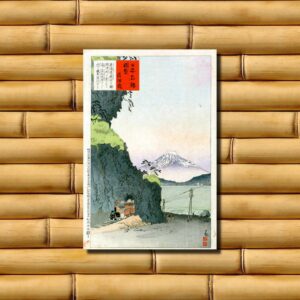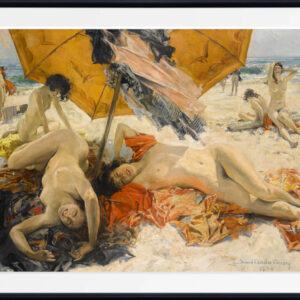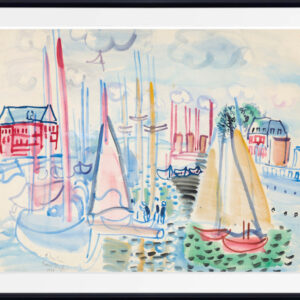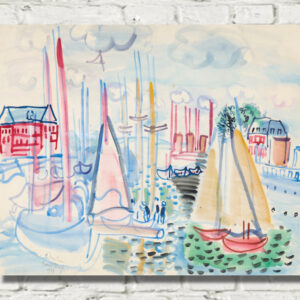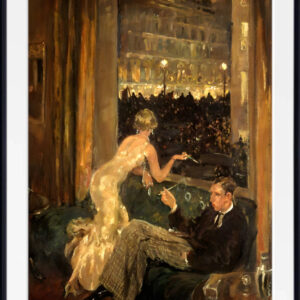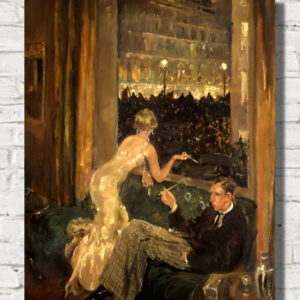36 Views of Mount Fuji, Great Wave off Kanagawa, Katsushika Hokusai, Japanese Print
The energetic and imposing picture The Great Wave (Kanagawa Oki Nami Ura) is the best-known work by Japanese artist Hokusai Katsushika (1760-1849), one of the greatest Japanese woodblock printmakers, painters and book illustrators. The Great Wave was created around 1831 as part of a series of woodblock prints called Thirty-six Views of Mount Fuji (Fugaku Sanju-roku Kei).
The most eye-catching feature of the painting is the extended wave as it is about to break with the crash of its claw-like crest. The beautiful dark blue pigment used by Hokusai, called Prussian Blue, was a new material at the time, imported from England through China. The wave is about to strike the boats as if it were an enormous monster, one which seems to symbolise the irresistible force of nature and the weakness of human beings.
Katsushika Hokusai was a Japanese artist, ukiyo-e painter and printmaker of the Edo period. Born in Edo (now Tokyo), Hokusai is best known as author of the woodblock print series Thirty-six Views of Mount Fuji (富嶽三十六景 Fugaku Sanjūroku-kei, c. 1831) which includes the internationally iconic print, The Great Wave off Kanagawa.
Hokusai created the “Thirty-Six Views” both as a response to a domestic travel boom and as part of a personal obsession with Mount Fuji. It was this series, specifically The Great Wave print and Fine Wind, Clear Morning, that secured Hokusai’s fame both in Japan and overseas. As historian Richard Lane concludes, “Indeed, if there is one work that made Hokusai’s name, both in Japan and abroad, it must be this monumental print-series”. While Hokusai’s work prior to this series is certainly important, it was not until this series that he gained broad recognition.
All prints are made using archival art stocks and UV pigment inks to give up to 200 years life. Choose from unframed, framed and mounted and canvas panel options.


